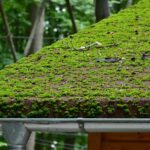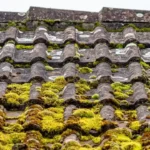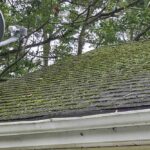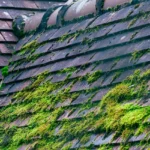In the world of home improvement, understanding how to design downspouts for better drainage plays a crucial role in maintaining your home’s health and longevity. As a homeowner, ensuring effective drainage is essential to protect your property from water-related issues. In this article, we’ll explore various aspects of designing downspouts to enhance drainage efficiency, and why this is an important consideration for every home.

Understanding the Importance of Downspouts
Before delving into the design elements, its vital to understand the role of downspouts in your home’s drainage system. Downspouts are the vertical pipes that direct water from the gutters down to the ground, away from your homes foundation. Properly designed downspouts can prevent a host of problems such as basement flooding, soil erosion, and structural damage.
Choosing the Right Material
The first step in designing effective downspouts is selecting the right material. Common materials include aluminum, vinyl, and galvanized steel. Each has its pros and cons. Aluminum is lightweight and rust-resistant, vinyl is cost-effective, and galvanized steel is durable. Consider your climate and budget when making a choice.
Optimal Placement and Sizing
The placement and sizing of downspouts are critical for optimal drainage. Downspouts should be placed at strategic locations where water naturally accumulates. Typically, they are installed at the corners of the house. The size of the downspouts should match the capacity of the gutters to handle heavy rainfall.
Design Elements for Better Drainage
Proper Slope and Angle
Ensure that your downspouts have a proper slope and angle to facilitate water flow. A gentle slope will allow water to flow smoothly without pooling. A professional can help determine the correct angle during installation.
Extending Downspouts Away from the Foundation
To prevent water from pooling near the foundation, downspouts should extend several feet away from the house. Use extensions or splash blocks to guide water further away, protecting your foundation.
Incorporating Rain Barrels
Rain barrels are an eco-friendly addition to downspouts. They collect rainwater, reducing runoff and providing a sustainable water source for irrigation.
Maintaining Your Downspouts
Regular Cleaning and Inspection
Like any drainage system, downspouts require regular maintenance. Regular cleaning prevents clogs and ensures efficient water flow. Inspect for leaks or damage and address issues promptly to maintain performance.
Sealing Joints and Connections
Ensure all joints and connections are tightly sealed to prevent leaks. Use appropriate sealants and check them periodically, especially after heavy rains.
Common Problems and Solutions
Dealing with Clogs
Clogs are the most common problem in downspouts. Installing gutter guards can minimize debris buildup. Regularly removing leaves and debris will also help maintain clear pathways for water.
Addressing Leaks
Leaks in downspouts can lead to water damage. Regular inspections and timely repairs are crucial. Use water-resistant sealants to fix leaks promptly.
Final Thoughts on Designing Downspouts
Designing downspouts for better drainage is an essential aspect of home maintenance. By understanding the importance of material choice, placement, and regular maintenance, homeowners can protect their properties from water damage. For more tips on maintaining your roof and drainage systems, visit this comprehensive guide.

FAQs
1. How often should downspouts be cleaned?
Downspouts should be cleaned at least twice a year, ideally in spring and fall. Regular cleaning prevents clogs and ensures efficient water flow.
2. What is the best material for downspouts?
The best material depends on your climate and budget. Aluminum is popular for its rust resistance, while galvanized steel offers durability.
3. Can I install downspouts myself?
While DIY installation is possible, hiring a professional ensures proper placement, slope, and sealing, enhancing the effectiveness of your drainage system.
This article contains affiliate links. We may earn a commission at no extra cost to you.








